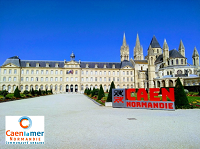Orateur
Description
Is it possible to combine a quantum mean-field theory and molecular dynamics within a unique framework for heavy-ion collisions?
Starting from the time-dependent Hartree-Fock scheme and by introducing a dynamical basis of orthogonal fermionic wave functions, we work out a solution to combine the advantages of the two above-mentioned approaches, bypassing a number of usual approximations. Such approximations like, for instance, the non-locality properties of nucleonic wave functions, are one of the essential reasons why current transport approaches may yield different descriptions.
The quantum mean-field description introduces spacial localization properties and it allows to describe densities in terms of an evolving level scheme. Molecular dynamics, on the other hand, involves nucleonic degrees of freedom which could be exploited to introduce nucleon-nucleon collisions and large-amplitude fluctuations, without needing to rely on averages, projections or effective nucleon-nucleon terms. We show, together with a few examples, how a dynamical basis, iteratively perturbed by collision events while ensuring that orthogonality is preserved, could be a possible solution to describe a broad range of energy regimes, from low to Fermi and intermediate energies.

